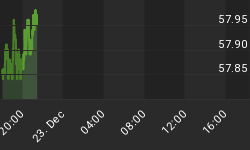Despite impressive rallies during the first part of 2015, many of the world's most heavily traded stock indices are showing signs of pattern completion and exhaustion. Some of those signs include price reaching major target/resistance areas, growing momentum divergence, and possibly complete Elliott wave counts. Here we focus on one such index that has reached a remarkable all-time high even in the midst of economic and geopolitical worries. If the rally in the DAX is complete, as it appears to be, then the premier German stock index might lead other indices in rolling over from their own completed highs or lower highs.
When we last wrote about the DAX, we suggested that it might have begun the fifth and probably final segment of an impulsive pattern up from its 2011 low. On a monthly time frame, the index is now hitting a target region identified by two different methods, marking the present area as one to watch.
On the first monthly chart below, we have applied the five-point pattern tool. Using a method that was first developed by Bryce Gilmore and Larry Pesavento and that was further improved by Barry Heiterachi for the Wave59 platform, the tool identifies areas where certain market structures might terminate. It calculates target areas, such as the range from 11,172 to 11,360 in the DAX, based on Fibonacci and/or arithmetic relationships among the major swings preceding the current leg. It also identifies a type of channel based on the end-points of those swings. As you see, the DAX is near resistance represented by both the target area and the channel line.

At the same time, the DAX appears to have produced a nearly complete Elliott wave structure up from the 2011 low, as well as an even larger structure that started much earlier. In the big picture, we believe the DAX spent twelve years tracing a large triangle, which in the context of Elliott could be either a fourth wave or a B wave. Price then broke out of the triangle in what seems to be a fifth wave or C wave, and it is now approaching a prominent Fibonacci extension target.
Regardless of whether the rally from 2011 is wave 5 or wave C, it should be followed by a powerful decline which could reasonably be expected to reach the area around 6,000 or possibly even lower.

On a weekly chart, the rally since 2011 has taken the expected five-wave form, although the nature of corrective waves [ii] and [iv] can make that difficult to see. The channel we have placed on the chart emphasizes the milestones of the journey, with a base anchored at the end-points of waves [i] and [ii], and with the channel positioned so the lowest part of wave [iv] intersected a harmonic of the channel.

The final part of the pattern - wave [v] - might be counted as complete, although that is not certain. As price approaches one of the standard Fibonacci extension levels at 11,256, we see a possibly finished structure with five sub-waves. If the pattern extends higher, then the next resistance level at 11,756 might come into play.
We hope this analysis is useful to readers who are trading or investing on a variety of time frames. We plan to post charts of additional indices at our website tomorrow.
















